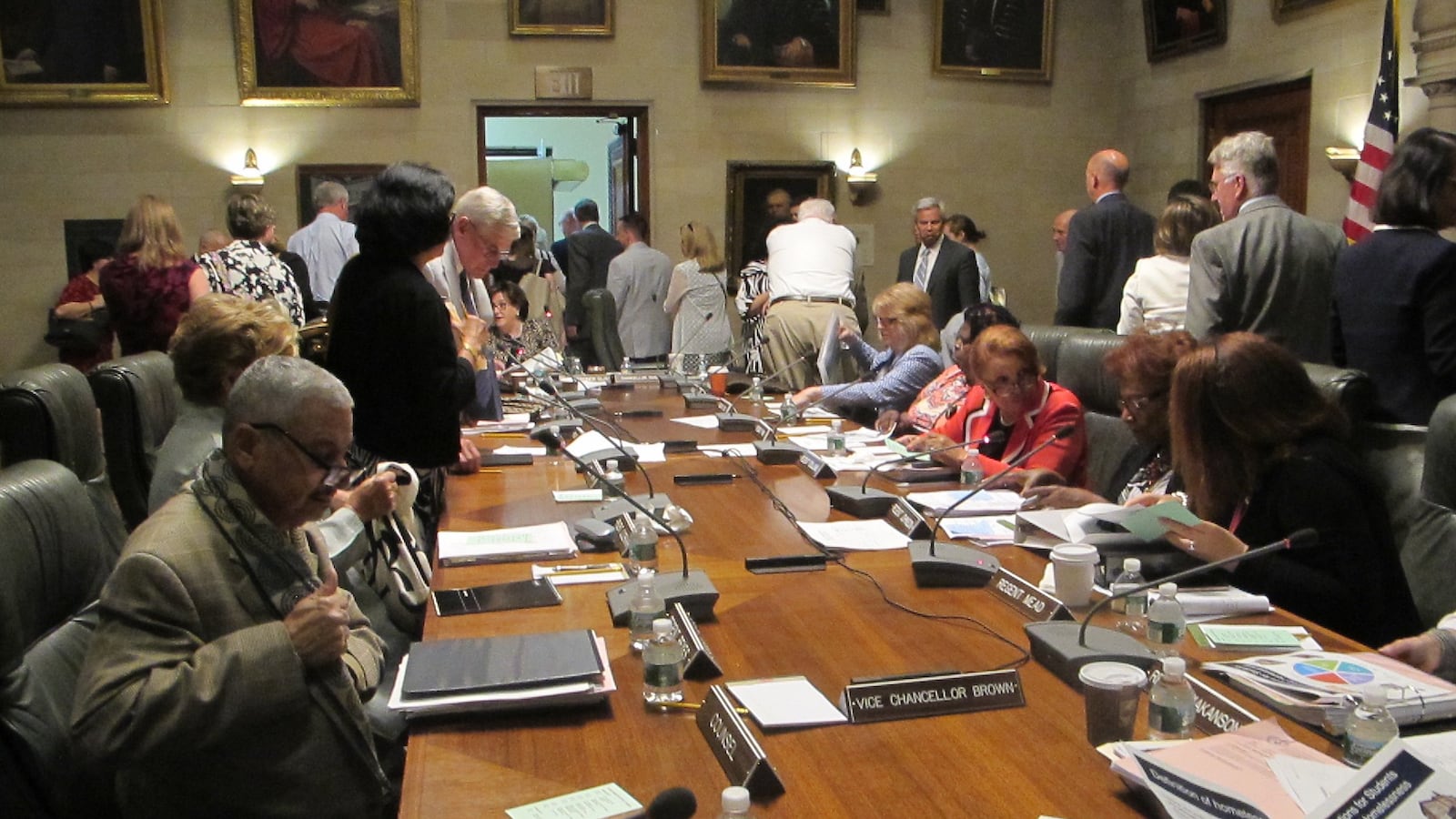Last week, the mayor’s drew headlines — and criticism — for his long-awaited diversity plan. Among the concerns — the mayor chose not to use words like “integration” or “segregation” to define the problem.
The state, on the other hand, isn’t mincing words. On Monday, the Board of Regents discussed its own draft diversity statement. “More than sixty years after Brown v. Board of Education,” it states in its opening paragraph, “New York is the most segregated state in the country.”
Language matters, notes Ian Rosenblum, executive director of EdTrust-NY. “They called it what it was and that’s very important because if you want to address the problem well, it’s important to fully understand the problem,” he said. “And the challenges that we face are the challenges of integration and segregation.”
The state’s draft document, “Promoting Diversity: Integration in New York State,” is meant as an introduction to the problem and solutions. But it does name some strategies that could help schools integrate, including redrawing zone lines or providing transportation to ensure housing patterns do not cement segregation.
“I still have a hard time accepting the fact that we have the most segregated schools in the country,” said Regent Judith Johnson, likely drawing on a landmark 2014 UCLA study. “We don’t think that’s a place where New York should be.”
Vice Chancellor Andrew Brown expressed the urgency that many felt the mayor’s plan lacked. “Unless we tackle this monster, I’m afraid that we’re never going to get there for those that most need us,” he said.
It remains unclear which concrete strategies the board will choose to adopt. A workgroup will start the process of creating a path forward. The Board of Regents will discuss next steps at its July retreat.
Monday’s discussion is a continuation of a conversation the Board of Regents had in April about how to leverage the federal Every Student Succeeds Act to integrate schools. Those ideas, which involve creating a metric to measure diversity and using integration as a school-improvement strategy, were included in Monday’s Regents document.
Convincing school districts across the state to value integration could be difficult task. Several members of the 17-person board said they are worried about creating mandates — and fear that forcing the issue will not produce the desired results.
Regent Susan Mittler, who represents a district with rural areas, spelled out some pushback the state may encounter trying to integrate schools in her area.
“You can’t sit 6-, 7- and 8-year-olds on the bus for an hour for the sake of integration,” she said. She raised a different idea to overcome the challenge, one the city’s chancellor has also endorsed: pen pals. “I know a number of districts that actually find another school, like in the inner city, and they actually [become] pen pals and then do trips and begin to integrate,” Mittler said.
Since integration is a tricky subject to tackle, the Regents should ensure they are prepared, Brown said.
“We can’t come out with a BB gun,” Brown said. “We need cannons. This is a big issue.”

